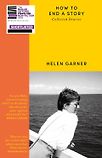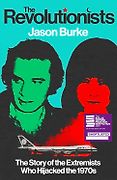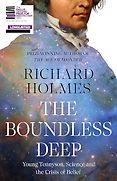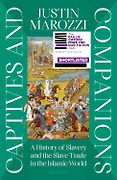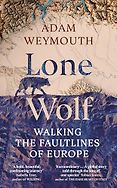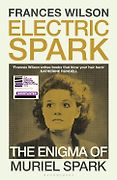For those who aren’t familiar with it, could you start by explaining what the Baillie Gifford Prize is?
The Baillie Gifford is Britain’s leading literary prize for nonfiction. It covers history, biography, memoir, science, politics, current affairs: if it’s nonfiction, it’s in the running. Also, occasionally, there’s hybrid stuff, like last year’s winner—Richard Flanagan’s Question 7—which had fiction elements in it. So it’s a broad church, but it’s a prize for literary excellence. The writing has got to be good.
You’re both the chair of the prize this year and the literary editor of the Times and Sunday Times. Have you noticed any trends in nonfiction in recent years?
The biggest trend over the past few years has been the rise of memoir. It’s pushed out slightly more traditional histories and biographies. Also, books grappling with mental health, usually from personal experience. Two or three years ago, all of a sudden, there were a lot of nature books that had a mental health element: ‘I’m depressed, but I forest bathed and it helped me.’
I noticed a couple of literary biographies on this year’s shortlist. Is that also a trend?
I don’t think it is. For me, it was quite a surprise. I studied history at university, and I love reading history. I thought, ‘I’m going to make sure there are lots of history books on the shortlist.’ But it just turned out that literary biography tended to be stronger this year.
We were lucky because there were some stonking books out there this year. Someone asked me, ‘What’s the thread that joins all six shortlisted books together?’ And, for the life of me, I can’t see one other than six judges thought, ‘These are very good books.’
Let’s look at each of them in turn. First up is The Revolutionists: The Story of the Extremists Who Hijacked the 1970s by Jason Burke, which looks at terrorism in the years 1967 to 1983. Could you tell us what it’s about and why it’s such a good book?
Jason Burke has done an impressive job with many different sources, crossing the whole of Europe and the Middle East.
The book is about the links between Palestinian and Western European terrorism. So you get the Red Army Faction playing a role. But the real focus, I think, is on the various off-shoots of the PLO, like the Popular Front for the Liberation of Palestine. It’s looking at these groups, trying to understand their motivations and what they were doing.
Do you remember when 9/11 happened, there was talk of the attack being ‘spectacular’ because Osama bin Laden had done this really attention-grabbing work of terrorism by flying two planes into the Twin Towers? It was these Palestinian terrorists and their sympathizers in the West who started that.
The very fact that getting on an airplane now involves what seems like an hour of going through detectors is down to these people, who came up with the idea that seizing airliners was a spectacular and eye-grabbing way of getting attention. So there’s a lot about airlines…I mean, I wouldn’t read this book on a plane, because it will only unnerve you.
There are some very interesting characters along the way. For instance, Carlos the Jackal, who became a gun for hire. He was from a rich Venezuelan background, a very left-wing family, but by the end, he’d been corrupted by the violence and was doing it for money. So the East Germans, the Bulgarians, and the like might have hired him to do freelance terrorism jobs.
These terrorists were some kind of idealists, but there’s a story of corruption there as well, which was interesting. There’s a bit of nuance.
At the beginning of the book, he points out the sheer variety of terrorists. It’s interesting looking at their stories and what might motivate this very diverse group of people.
Yes, and then by the end—this is not a plot spoil, because it’s history—it’s the changing of the guard. We come across Hezbollah’s first actions in Lebanon. This is when you get the religious-inspired terrorism, because the generation that Jason Burke is looking at seems to be quite secular and mainly motivated by Marxism.
Weirdly enough, there’s a certain amount of humour in the book. Obviously, it’s very serious, looking at some terrible outrages, but you have the culture clash between the young, Western student Marxists who are going to the Yemen or the Lebanon to training camps, and the women want to sunbathe naked and such like.
One bit that grabbed my attention was about the Western Marxist groups and the countercultural liberalism attached to them. So there were all sorts of rules about what you could do sexually. For example, oral sex was regarded as bourgeois and to be avoided. The thing to aim for was simultaneous orgasm, to show you’re a proper feminist. So there’s stuff like that.
He’s done a wonderful job of recreating this strange, violent world.
Let’s turn to the next book. This is How to End a Story, which are the collected diaries of Helen Garner. Do you want to say who she is and why the book made the shortlist?
Helen Garner is an Australian novelist, also very well-known for her nonfiction books—like This House of Grief, where she followed a famous Australian trial about a father who had killed his children. She’s never quite cracked the British market, but publishers have been reissuing a lot of her older books, like The Children’s Bach.
I have to confess that, at first, I was a bit sceptical about this book. It’s 800 pages of her diaries from 1978 to 1998. That’s a lot of words about someone who I didn’t know huge amounts about. But I found it absolutely gripping.
I suppose there are two elements that really appealed to me. The first one is that she’s just a brilliant observer of everyday life. The passages are short, a couple of paragraphs. It could be eavesdropping a conversation which amused her. It could be something about a book she’s read. Sometimes she just sees something on the street which appeals to her, and she puts it down on paper. And you think, ‘Yes, that’s exactly how things are.’
The other element to it—which, by the end, is the real pull-through—is her marriages. So when we first meet her, back in 1978, her second marriage is just coming to an end. Then midway through I think the second volume—it was originally published in three volumes—she meets a man. She calls him X (She usually just gives people initials). He is a married man who she begins an affair with and eventually marries. We see the car crash relationship develop, and by the end, it gets a little bit violent. It’s mainly violence against objects, luckily. But it comes to quite a dramatic end.
I was reading it, and one of my colleagues had also read the book. Every day, I found myself coming into work saying, ‘You can’t believe what X has done now!’ It felt like being privy to very raw emotions. It surprises me that she hasn’t published it posthumously. Obviously, she’s edited it and shaped it, but there are parts where she is very unsparing of herself. There are some completely embarrassing moments, yet she puts it all out there.
I love how novelists in particular—the really good ones—just go to places where mere mortals like me would never go, whether it’s baring their emotions or revealing their inner lives.
It sounds brilliant now you’ve explained it, because when I dipped into it, I wasn’t sure.
Yes, I had that initial sensation of thinking, ‘Where is this going?’ but the moment I finished it, I wanted to read it again. I realized how brilliant it was and wanted to check all the things I’d missed. I thought at first there was no narrative shape to it, but once it reveals itself, it’s an extraordinary work of art.
She’s a beautiful writer. It was interesting rereading it because all of her cleverness, her smart observations, flower again. There were all sorts of things that had entered the silt of my mind, were sitting under the surface, and reemerged. It’s a terrific book.
Let’s go on to The Boundless Deep by Richard Holmes. This is a biography of the young Alfred Tennyson, as opposed to the old guy with the beard.
Holmes does a remarkable job because when I think of Tennyson, I do think of him as the Victorian grandee with the stern countenance and frightening beard. It didn’t help that he became Poet Laureate. We don’t think of Victorians having a good time. He represents the Victorian era, in all of its grandeur and all of its stuffiness.
Tennyson is like a statue that symbolises that age, and I think Richard Holmes has done a terrific job of getting rid of the cobwebs and seeing the young, beardless man, who was quite dashing in his own way. Our reviewer in the Times described Richard Holmes as being like Trinny and Susannah (who do makeover programs on British TV) doing a literary revamp on him. He’s done a very elegant job on that.
Holmes also shows the intellectual ferment of the time. This is before Darwin, but you’ve got other scientific discoveries with geologists digging up fossils, etc. It was a faith-shaking era, and it’s interesting to see Tennyson engaging with these scientific controversies in his poetry. It’s like modern poets engaging with AI, how it’s going to change everything, and what it means to be human.
Tennyson’s family story is also absolutely intriguing. There was a lot of mental illness. His father was violent and even tried to kill Tennyson’s brother. Tennyson always had this fear that the madness would catch up with him. It’s quite something for someone with a creative mind to want to engage with the world, and yet always be worrying about the dark recesses of that mind and what was going on there.
There was also the death of his friend, Arthur Hallam. Tennyson had this death-stalked life. After you read it, you’re amazed that Tennyson got up in the morning to write his poetry.
So there’s myth-busting going on in the book. The humanizing of this Victorian monument drew all the judges in.
One of Holmes’s books, The Age of Wonder, has been recommended a number of times on Five Books. What does he normally write about?
He’s written a couple of very good biographies of Romantic poets. But as one of my colleagues—who’s a big fan of Richard Holmes—said, it’s much harder to make Tennyson fun. With Coleridge, you’ve got drug-taking; if you’re writing about Byron, there’s sex. Tennyson is a harder character to get to grips with, but nonetheless, he’s given us the man in full.
Let’s look at the next book on this year’s shortlist. This is Captives and Companions by Justin Marozzi. Could you tell us what this one is about?
This is a history of slavery and the slave trade in the Islamic world. It goes back to the time of the Prophet and some of his more contentious teachings, which are still used to justify slavery today. It’s book-ended with reports of modern slavery in Mali. It’s a great, epic, sweeping history that takes us through 1500 years.
The story is told with real panache. Marozzi will take us inside an Ottoman sultan’s harem. If you have many concubines, you also need to have many slaves to guard them, including eunuchs.
One of the reasons why we, the judges, all liked it was that it took a certain amount of courage to write it. It’s obviously a tricky subject. There are a lot of books about the Atlantic slave trade and slavery in the Americas, but there hasn’t been a huge amount of literature—certainly in the English-speaking world—about the slave trade in the Islamic world, which has been more enduring. As many people were enslaved over a longer period of time, so they are certainly comparable, but the size of the literature isn’t. He managed to write about it in a very candid way without being cheaply provocative or trying to score points.
I read the prologue, where he’s outside Bamako in Mali talking to somebody who’s enslaved. That was a shock, reading about slavery today.
It’s an incredibly resonant book. He also knows how to tell a story. So he will take contemporary accounts, which are often over the top and fanciful with made-up numbers, and give that story. Then, more soberly, he’ll read between the lines. It’s a hard job for him to do, and I think he’s achieved it.
One of the problems with history about slavery is that the enslaved people rarely have a voice, and he does a good job of trying to ensure they do.
He’s also very good at the nuance of it. Enslaved people could actually rise up the ranks, for example, at the Ottoman court, and have quite distinguished positions, despite being enslaved. It’s a fascinating picture, and he’s written it with real confidence.
Let’s go on to Lone Wolf: Walking the Faultlines of Europe. This is by Adam Weymouth, who follows in the footsteps of a wolf from Slovenia named Slavc. Tell me more.
I tend to be a bit suspicious of nature writing, because it can be rather fey. A lot of nature writers fall in love with the sound of their own writing—not a sunset goes undescribed. So I approached this book with a certain amount of prejudice, but that dissolved straight away. He’s a beautiful writer and makes it look easy.
Adam Weymouth is doing a number of things in the book. It’s nature writing, and it’s a travelogue. It’s also about the politics of conservation—because I hadn’t realized the extent to which wolves had made a comeback.
The wolf, Slavc, goes on a journey from Slovenia, across bits of Austria, into Italy. You’ve got the drama of following this wolf and, along the way, the author talks to farmers, to hunters, to people who don’t want to see the wolf return. When you realize how wolves kill their prey…those poor cows, it’s quite dramatic.
He talks to lots of different people to give you a picture of the politics of conservation. Should we re-wild? Should we have more large carnivores roaming the European landscape again? He’s very evenhanded and allows everyone their voice.
He’s very good at describing these rural communities which are completely forgotten about. That also allows him to get into the politics of populism. One of the mayors he talks to in a small Italian town—who’s on the populist right—uses opposing the return of the wolf as a way of getting elected. A lot of people are frightened of these animals roaming around, killing their livestock.
So Adam Weymouth does a lot in the book, and he does it with grace and lightness, and he pulls you through. Because if you’d asked me, ‘Do you want to read a book about the politics of conservation and whether EU subsidies should direct the countryside towards rewilding?’ I would have said no, but I did.
It made me laugh when he talks about Slavc finding a mate in Italy and the Italians calling the other wolf Juliet.
It is very moving. He’s on the trail of this wolf 10 years later, but you get a real sense of a wolf in a landscape—trying to cross a motorway or railway tracks and thinking, ‘Oh no, I’ve got this far, and now there are a lot of humans around here. I’d better go a few hundred kilometres to get around the other way.’ He doesn’t do it in a soppy way. But, nonetheless, there are moments when you really get a sense of what the wolf must have seen and felt, and then it is a bit heartbreaking at the end.
Finally, we’ve got Electric Spark by Frances Wilson. This is, I believe, a biography about the young Muriel Spark?
Yes, exactly. One of the things we, as judges, enjoyed about both of the literary biographies on the shortlist is that we weren’t carpet-bombed with facts about someone’s life from cradle to grave. Neither was one of those big, maximalist American literary biographies where you get everything, including the laundry lists and which restaurant they were eating at on a certain date. They’ve been much more picky about what they’re going to tell you and created these wonderful stories about these characters.
Frances Wilson, like Richard Holmes, is one of those people where you wonder, ‘Why hasn’t she won this prize before?’ She’s very distinguished.
As you say, the book focuses on the younger Muriel Spark. It’s actually very funny in places. Muriel Spark ran the Poetry Society for a while after the war, and the character sketches of the male poets of that time—men in ill-fitting corduroys thinking they could dominate or seduce this very vivacious, attractive woman… At every stage, she has to fight her way through against these slightly lechy, ridiculous men.
Then there’s her service during the war at Bletchley Park. Frances Wilson uses that wartime experience of helping crack German messages to talk about Muriel Spark’s love of puzzles, of codes, of secrecy. When you go back and read her novels, you do see bits of trickery and things withheld. Blackmail appears in them a lot.
Of the six books on the shortlist, this is probably the funniest. Frances Wilson is a very witty writer, and Muriel Spark had a very offbeat sense of humor. So there are bits that are terribly amusing.
Thanks so much, Robbie, it’s a great selection of books. I’m always grateful to the judges for picking them out, as there are so many books out there that finding the good ones can be hard.
It’s been a fascinating process. If I’d just done the shortlist on my own with no discussion, there are a couple of other books that would definitely have been on there. But the wonderful thing about chatting with the other judges is that it really tests what you actually think about a book. The other judges were tip-top.
The winner of the 2025 Baillie Gifford Prize for Non-Fiction will be announced on Tuesday, November 4.
Interview by Sophie Roell, Editor
October 22, 2025. Updated: December 12, 2025
Five Books aims to keep its book recommendations and interviews up to date. If you are the interviewee and would like to update your choice of books (or even just what you say about them) please email us at [email protected]
Five Books interviews are expensive to produce. If you've enjoyed this interview, please support us by donating a small amount.

